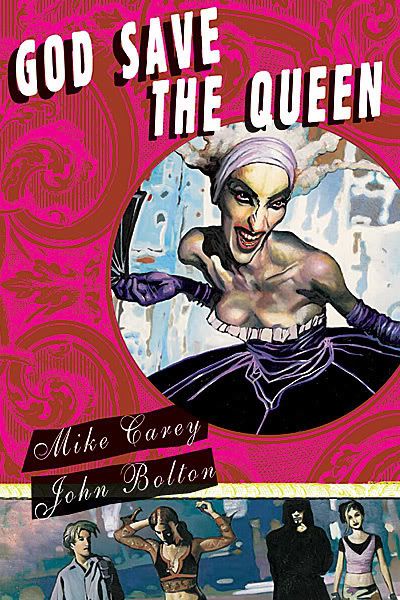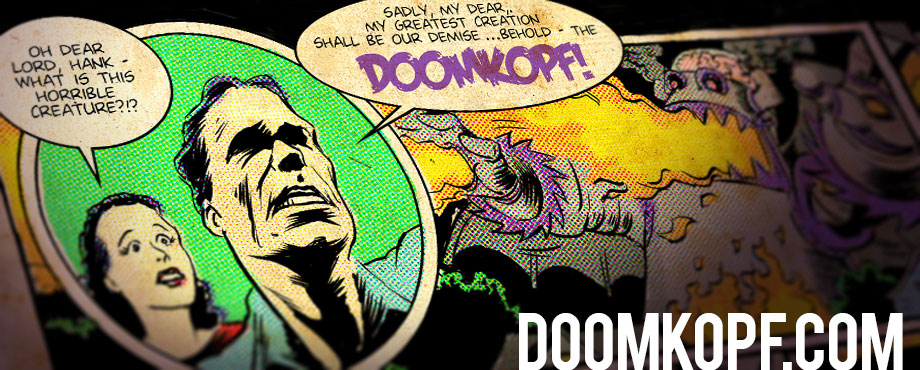Preview: God Save the Queen
By Mike Carey (W) and John Bolton (A)
Vertigo, 2007, $19.99
Of the major comics writers out there right now, Mike Carey is one of the most prolific and diverse. He writes horror titles, big superhero fare and smaller stuff, like Vertigo’s Crossing Midnight. This week sees the release of his original graphic novel that twists the classic fairy tale and melds it with the London drug scene — God Save the Queen.
 The book is perhaps best known for the flap about whether the cover painting (seen here) revealed a nipple. After closely examining the preview copy sent over by Vertigo, I can conclusively say that it’s a shadow. Also, I opened the cover and it turns out there’s a book inside. Go figure. Carey draws together a wealth of British fantasy and folktale tradition and creates a “reality-based” fantasy world of his own, in which faeries and such are real, but most people don’t know about them. What works well is how he treats the magical creatures: they are very real, with all the faults and complexities of people.
The book is perhaps best known for the flap about whether the cover painting (seen here) revealed a nipple. After closely examining the preview copy sent over by Vertigo, I can conclusively say that it’s a shadow. Also, I opened the cover and it turns out there’s a book inside. Go figure. Carey draws together a wealth of British fantasy and folktale tradition and creates a “reality-based” fantasy world of his own, in which faeries and such are real, but most people don’t know about them. What works well is how he treats the magical creatures: they are very real, with all the faults and complexities of people.
While most fairy tales about young girls have the main character stumble into this fantasy world, God Save the Queen inverts that by having this fantasy world insert itself into the life of Linda, a teen who has turned to partying, drugs, etc. to fill the void of her father’s disappearance. She becomes entwined with a group of junkies (they’re very hip and cool, but still clearly addicts) and they reveal that they’re actually faeries. The hunt for drugs escalates into a full-fledged battle for queenship of the faerie realm, with Linda at the center.
A lot of God Save the Queen has to do with mother-daughter relationships, and Carey crafts these with appropriate complexity. The story splits between the fights between the various faerie queens and the troubles between Linda and her mother, who’s fallen into drinking. The disparate strands weave together stealthily to a conclusion that falls somewhere between surprising and expected.
The copy I looked over had only half of the pages printed in color, so it’s a bit hard to review the art for the full book (the real deal will be all color). But, the pages of Bolton’s painting that were completed fit the tone of the book very well and were attractively done in their own right. Painting doesn’t always work in comics, but here it adds a lot.
My only real complaint about the book is the length. It comes in under 100 pages, which is just too short for a work of this complexity. The first act moves along at a fine pace, but things become progressively more rushed through a third act that’s blink-and-you-miss-it fast. It’s still one of the more interesting books I’ve read this year, but with more heft it could’ve jumped into contention for best graphic novel of the year.
